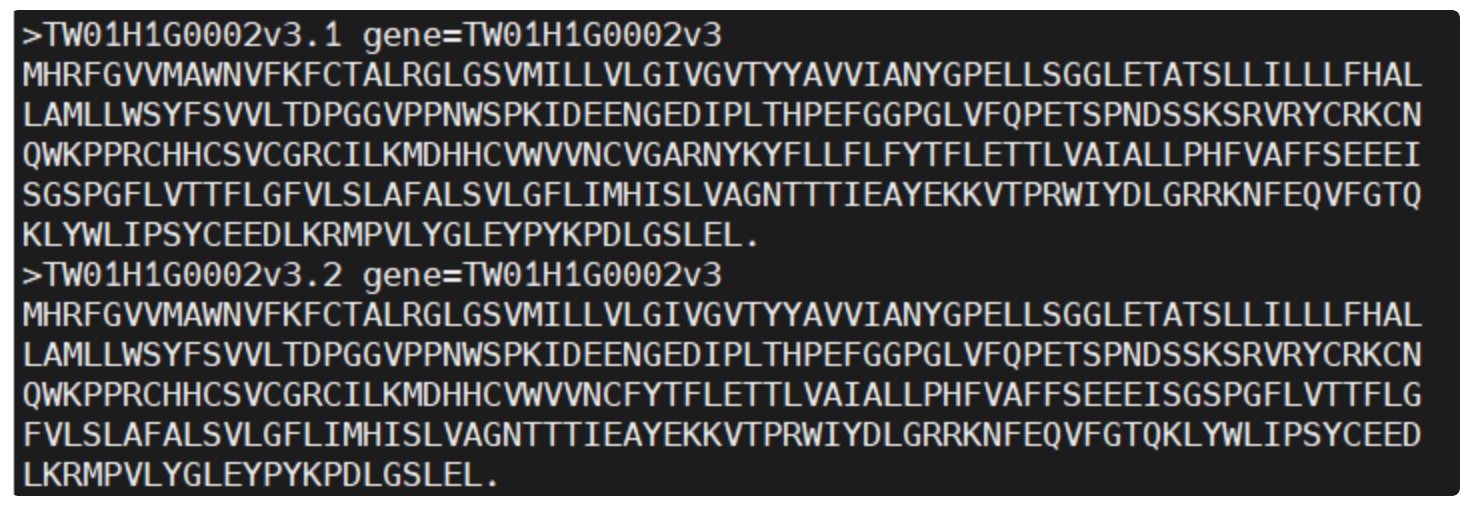非最长转录本的蛋白质示意图
提取最长转录本
from collections import defaultdict
from Bio import SeqIO
# 输入输出文件名
input_fasta = "proteins.fa" # ← 改成你真实的文件名
output_fasta = "longest_protein_per_gene.fa"
# 存储最长序列
longest_proteins = {}
# 遍历每条序列
for record in SeqIO.parse(input_fasta, "fasta"):
header = record.description
seq = str(record.seq).replace("X", "") # 去除终止符X,不然长度会不准确
transcript_id = record.id
# 解析 gene_id(从 header 中提取 gene=XXX)
gene_id = None
for item in header.split():
if item.startswith("gene="):
gene_id = item.split("=", 1)[1]
break
if gene_id is None:
continue # 跳过没有 gene= 的条目
# 如果更长,就更新
if gene_id not in longest_proteins or len(seq) > len(longest_proteins[gene_id].seq):
longest_proteins[gene_id] = record
# 写入输出
with open(output_fasta, "w") as out:
SeqIO.write(longest_proteins.values(), out, "fasta")
print(f"✅ 已输出每个基因的最长蛋白到: {output_fasta}")
原始ID去掉版本号
from Bio import SeqIO
# 输入输出文件名
input_fasta = "proteins.fa" # ← 请替换为你的真实文件名
output_fasta = "cleaned_proteins.fa"
# 打开输出文件
with open(output_fasta, "w") as out:
# 解析输入的FASTA文件
for record in SeqIO.parse(input_fasta, "fasta"):
# 获取原始ID并去掉版本号(例如 ".1" => 空)
new_id = record.id.split(".")[0] # 仅保留版本号前的部分
# 更新转录本的ID
record.id = new_id
record.description = new_id # 也更新description
# 写入新的FASTA文件
SeqIO.write(record, out, "fasta")
print(f"✅ 已输出去除版本号后的转录本:{output_fasta}")修改后文件

